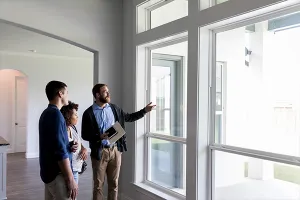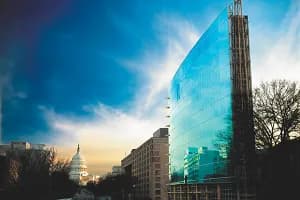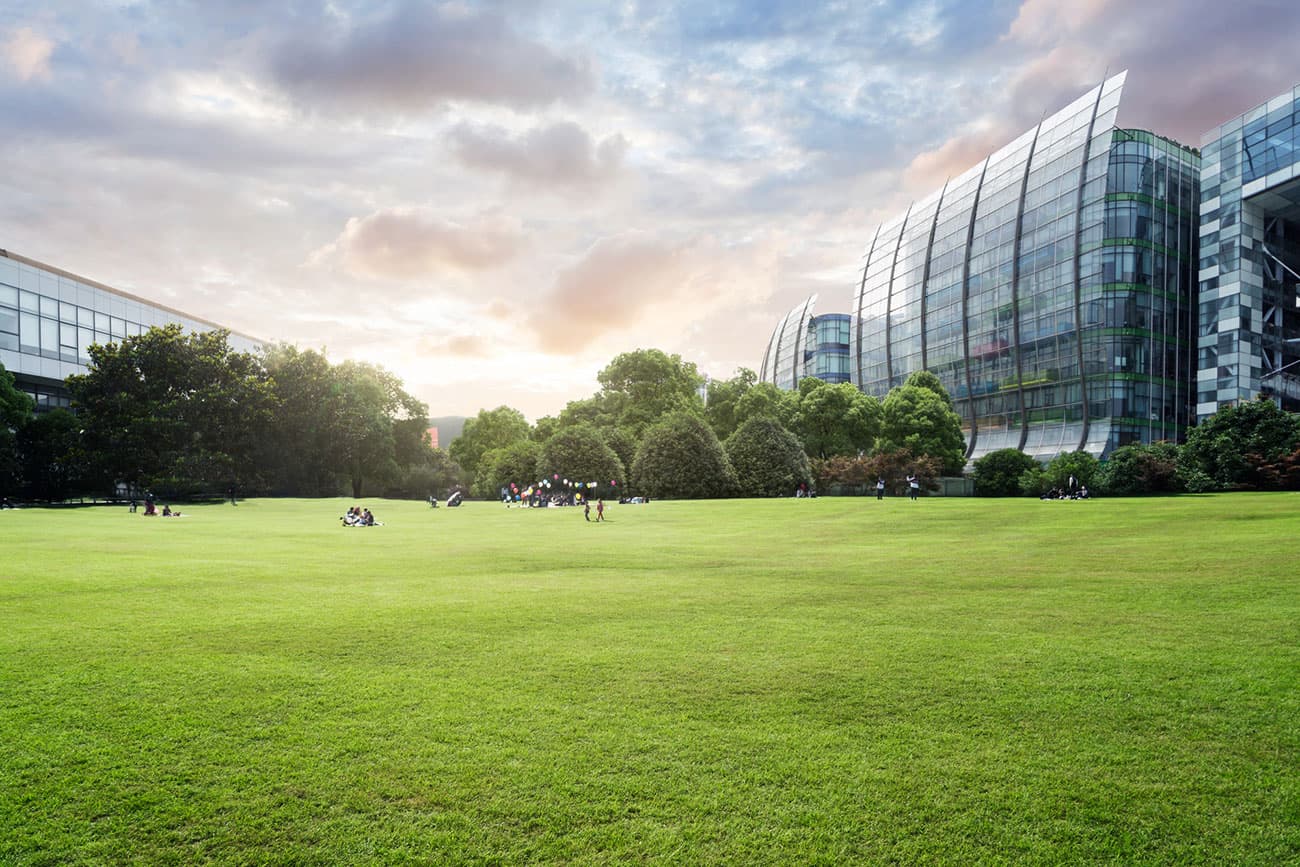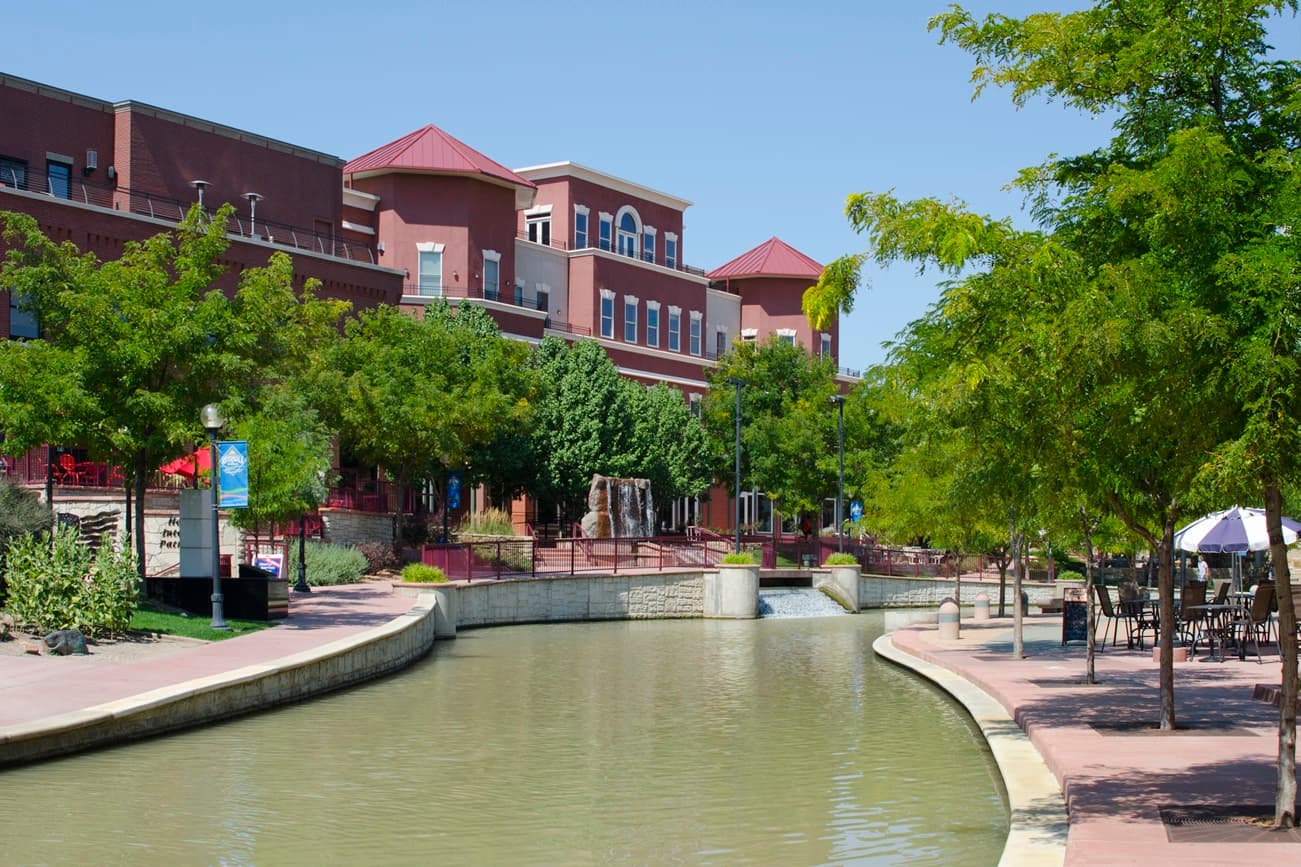
Wind gusts up to 40 miles per hour were raging on the morning of November 8, 2018, when a transmission line failed in a canyon outside of Paradise, Calif., sparking a devastating wildfire that would burn for two weeks, killing 85, destroying 18,000 structures and laying waste to miles of transportation infrastructure.
“Studies afterward said the Camp Fire burned 80 football fields a minute and traveled 13 miles in a matter of hours,” said Marc Mattox, who on that day was—and remains—public works director and town engineer for Paradise. “Embers leapt from canyon to canyon, and we were surrounded by fire on both sides. Our major relief valves are constrained by ridges.”
The nature of the town’s road network played a large role in the record loss of life in the wildfire, said Barry Long, whose firm, Urban Design Associates, has been assisting the town in planning for recovery and resilience in the face of future threats. “The way the town is laid out, it had a series of ridges and valleys, and all routes out were blocked on the day of the fire,” Long said. “They had miles-long, dead-end streets. It’s so easy to get trapped on your street if you have only one way in and out.
On the day of the fire, they had a problem with embers landing on cars and people abandoning them and blocking roads… and they had utility poles and trees falling into the streets.”
The day before the fire started six years ago, the concept of “transportation resilience” was hardly on the radar, Mattox said. Today, it’s nearly all he thinks about. From a transportation standpoint, resilience covers a lot of ground: how we design and maintain specific pieces of infrastructure and the networks they create; laying the groundwork for evacuations before an extreme event while providing for first responder access in the heat of the moment and goods delivery afterward; and planning for the ability to operate transportation systems during a period of recovery. “Everywhere in this country has perils that they face and should be planning for,” Mattox said. “I always think planning for transportation resiliency should be top of mind for every community, wildfire prone or not.”
“Every place has at least two hazards to consider for transportation resilience,” and in most places the threats are rising, said Stephen Wong, a professor at the University of Alberta who leads a collection of researchers in the Resilient and Sustainable Mobility and Evacuation Group (RESUME). States and localities should be planning for natural disasters like wildfires, floods, tsunamis and earthquakes as well as hazards such as train derailments and industrial accidents.
“I think about transportation resilience in three main categories,” Wong said. “The first is infrastructure such as highway and transit systems. The key is to think about designing to avoid damage in an event or series of events, and to ensure operability for a long period of time afterward. We are not that good at that, it turns out. When we develop infrastructure projects we focus on efficiency, cost, safety, but rarely on resiliency. In this new normal, that needs to change.”
Strong, Defensible Communities and Volunteer Empowerment
Wong’s next category is evacuation. “Most communities in North America don’t have an evacuation plan, and if they do it doesn’t talk about the most vulnerable people, and often it is not publicly available. As a result, the public doesn’t know what to do.”
The third resilience bucket is “community design,” Wong said. A key question here is whether people have multiple ways to get around, before, during and after a major event. “Having multimodal options is critical to mitigate some of these hazards.
“In an evacuation in more urban places you might have people without ready access to a vehicle, there might be a lot of tourists and residents who rely on transit. People who have access to vehicles have options that those without don’t, and you have to plan for that.”
Urban design plays other roles, as well, said Rob Steuteville, director of publications for the Congress for the New Urbanism. Resilience planners often think in terms of “fortifying and defending” a place from wildfire or flooding, walling off a community from potential threats with a fire break or levy wall, for example. “If you have a place that is compact, you can defend it. It becomes very difficult if you have sprawl.”
Steuteville pointed to the Louisiana town of Jean Lafitte, south of New Orleans, which adopted a resiliency plan that calls for focusing development and preservation efforts in a town center that can be protected by a “ring levee.”
The trick with designing for resiliency is to balance everyday needs for mobility, accessibility, and safety with features that are useful in the event of a disaster
“A compact place is also walkable. That makes for a healthier population, which also helps a community be more resilient,” he explained. The trick with designing for resiliency is to balance everyday needs for mobility, accessibility, and safety with features that are useful in the event of a disaster. “Wider streets might help during an evacuation, but if you just make really wide roads, you don’t have walkability and it becomes dangerous to kids every day, not just during a natural disaster.”

“One thing I’ve learned from the research is just how much of disaster response is volunteers just showing up and doing what they can do to help people,” said Dillon Fitch-Polse, a professor at the Institute of Transportation Studies at UC Davis. In his research into the role that active, non-car transportation can play in resiliency, he found that while e-bikes might become useless in the event of prolonged power outage, regular bikes “are a workhorse,” because they don’t need electricity, are readily available and easily stored, and can haul cargo even when roads are blocked to larger vehicles.
“If we had a plan with trailers stored, and people showed up to volunteer, we could say go get your bike—and then you’ve created a goods delivery system. There is a lot of planning for getting goods into a recovery area, but not a lot of planning for distributing them. It’s a classic logistics problem, but you also have extreme circumstances—blocked roads, fuel supplies shut down,” he noted. The concept is demonstrated annually in a roving series of Disaster Relief Trials.
Planning the Road(s) to Recovery in Paradise
Perhaps unexpectedly, Paradise is incorporating bicycle infrastructure in the transportation master plan that Long helped to create for the town’s recovery and future resilience. “The town has adopted a policy to add missing road segments of arterials to complete the grid, and to create a micro-connectivity by linking the long dead-end streets,” Long said. “The town didn’t have good pedestrian and bike infrastructure before the fire, and what they realized is that if they did have a trail system, it could be used during and after fire for emergency vehicle access. So, they are creating an interconnected path system along the main roads being developed as they rebuild.”
Paradise is incorporating bicycle infrastructure in the transportation master plan.
“Our community said putting things back like they were isn’t good enough,” Mattox said. “The transportation master plan was a really important part of the recovery.” The plan lays out more than 50 projects to restore and upgrade transportation infrastructure for evacuations and to make the community more resilient to future shocks. As critical, federal and state resources are being made available to get the projects done.
“Right now, we are implementing a three-year capital program of over $400 million in projects. Pre-fire we had a $10-15 million capital improvement program for three years,” Mattox said. “A lot of the funds we are using now are really only available after you’ve been approved as a presidentially declared disaster. The projects we’re talking about now could never have been possible absent the fire.
It’s a hard reality, because we’re talking tens of millions just to connect two streets that never connected before.” After the experience of above-ground utility poles burning and crashing onto the roadway, the town is putting all utilities underground, meaning every street has been or will be seeing construction. The electrical utility PG&E—which had culpability in the fire—is paying for a substantial portion of that work.
Adding the network of bike-walk trails alongside the main roads solves several problems.

Adding the network of bike-walk trails alongside the main roads, along with turn lanes, solves several problems at lower cost than merely building bigger roads, Mattox noted. “Using more trails as resilient infrastructure is a great strategy for rural areas. People don’t want to live on a freeway, so just adding lanes wasn’t the best solution. In times of emergency, the paved trail can become an additional lane to get people out or resources in. We think we’re onto something as an affordable approach that people also like and use on a day-to-day basis to get to school and a grocery store.”
Planning for Transportation Resiliency on Florida’s Space Coast
Sidling up to the Atlantic Ocean, an hour east of Orlando, is Florida’s “Space Coast” in Brevard County, home to the Kennedy Space Center; Cape Canaveral Space Force Station; a key port; Cocoa and other tourist-favored beaches; and a national seashore and wildlife refuge. It also is subject to regular flooding, threats of tropical storms and even wildfire. But the region’s 2022 Transportation Resiliency Master Plan actually arose from a jarring look into the crystal ball. A 2016 modeling exercise with NOAA and the U.S. DOT showed that portions of key transportation corridors likely would be inundated by 2040, said Sarah Kraum, senior transportation planner for the Space Coast Transportation Planning Organization (TPO).
“Our board recognized that we are going to see impacts along the way, well before we hit that inundation point,” with more frequent flooding from storms, king tides and other events. “We needed to identify the corridors that we need to invest in now.” The TPO hired consultants Kittelson & Associates to help create a resiliency master plan and pulled together a 52-member stakeholder committee made up of officials from the 16 cities and towns in the region, from agencies including NASA, Port Canaveral and the Indian River National Estuary.
“We tried to find anyone and everyone with any kind of expertise,” Kraum said. “We got everyone together and asked what keeps you up at night?” They began by identifying “shocks” and “stressors.”
“Shocks are an immediate event, like a hurricane or earthquake,” said Kraum. “A stressor is something like aging infrastructure, sea level rise and flooding that happen more systematically, over time.
“The plan ultimately focuses on the Big 5: fire, flooding, sea level rise, shoreline erosion and storm surge. When we sat down with our consultants, we found there weren’t a lot of models for this. There were lots of vulnerability assessments but not that many plans for resiliency.”
The fundamental task was to identify the key links in the network that were both most vulnerable and most essential for the community’s survival and recovery, said Mary Raulerson of Kittelson, who worked with the TPO on the plan. “It’s hard to get communities to prioritize one area as more critical than another. The task force actually resisted that, because how can you say one area of homes is more important?” But a couple of corridors soon rose to the top. State Route 528 leads from Orlando to Port Canaveral and is the conduit for all the Space Coast’s fuel, as well as that for Orlando International airport.

“It is the key route in and out of the port; it’s critical to space operations, to the Coast Guard and the Navy,” said Kraum. “A bridge from Merritt Island to Port Canaveral needs to be replaced, and it needs to be elevated to avoid flooding.”
The resulting plan called for designing and prioritizing funding for that segment. The other key corridor is SR 520 leading out to the tourism haven of Cocoa Beach. “After every big storm or king tide, that’s where I go to see just how flooded are we,” said Kraum. “It’s not just important for tourism, it’s also a major evacuation route.” After prioritizing the route in the plan, the TPO received funding from the Florida Department of Transportation to design for a more resilient corridor.
Change—Even To Make People Safer and More Resilient—Brings Resistance
One of the big resilience moves on those key corridors was to replace traffic signals with roundabouts. “In Florida, where the electricity goes out during every tropical storm and the traffic signals don’t work — how do you get around? Something like a roundabout solves a problem and is a resilient solution because you don’t need a light. And, they are notably safer. But many residents are leery of the change and some are even opposed,” Kraum said. “We haven’t had a lot of roundabouts and they have been a tough conversation in the past. But if you lose power they work, and you also remove the [light pole and mounting arm] that can get damaged—and cause damage—in a hurricane. Still, that change makes some people anxious.”

The planning effort also brought stark focus to another important realization, said Kraum: “Our community is only as strong as our most vulnerable, and transportation is critical to get to jobs, school, to get to fresh and healthy food and more. We looked at transportation disadvantaged populations and prioritized corridors according to not just shocks and stressors, but also who would be most in need.” The Space Coast effort to act ahead of a major disaster, rather than in the wake of one, means the region must make investments for resilience without the cash infusion that would come after an emergency.
“We can sit here and plan and identify issues, but in order to address them, transportation projects will become more complicated and innovative, and expensive. But how do you fund them? In a way, funding is our biggest stressor, the biggest thing that is preventing us from being resilient.”
Philadelphia Pioneers Resilient, Green Streets—And a Greener Freeway
Part of institutionalizing resiliency is to ensure that critical facilities are in good repair, and that could mean reconstructing those that are nearing the end of their design life. That was the case for I-95 through central Philadelphia, a mostly elevated, mid-20th century segment that by the early part of the 21st needed a significant overhaul. But rather than merely recreate the asphalt gash that sliced its way through center city, the state, city and neighborhood residents wanted to use the opportunity to make the central city more resilient to flooding from stormwater runoff, treat water naturally and provide more opportunities for healthy activity in the adjoining neighborhood.
Philadephia has chosen to lean on green stormwater infrastructure for resilience.
At the same time the Pennsylvania Department of Transportation (PennDOT) was considering a rebuild, the city of Philadelphia was developing the concept of “green streets” that use vegetated spaces to capture and clean stormwater, while also making streets safer at the same time. “Most of the time, people want green for beautification, and they don’t think about the role it plays in resilience,” said JP Weesner, principal landscape architect and urban designer at Kittleson, which consulted to PennDOT on the freeway rebuild. “It’s like giving your dog a treat with a pill stuffed in it.” Philadelphia has been under a consent decree to better manage stormwater, and projections of more frequent and intense storms are only going to make the challenge worse.

But rather than rely exclusively on giant concrete facilities—or “gray” infrastructure, the city has chosen to lean on green stormwater infrastructure. That approach is critical to resilience, Weesner said. “New Orleans during Katina showed us that the corps of engineers can’t solve this problem with that style of engineering. If you have every street, the open spaces, all taking on some of the flooding you handle a lot more.” Philly’s green streets program is a collaboration among the transportation, water and parks departments to find locations on city streets where rain gardens, vegetated bump-outs and tree trenches can capture runoff, filter it and drain slowly to streams. In what some have termed a “virtuous cycle of green,” those same measures can help to slow neighborhood traffic and make streets safer and more comfortable for people walking or biking.
Running along the Delaware River, I-95 in central Philly “has an industrial heritage, and it’s elevated over old RR spurs,” said Charles Davies, who oversees engineering and design for PENNDOT’s Philadelphia region. “But in the last 20-30 years there has been strong residential development, and people wanted access to waterfront. You had this elevated highway that is seen as a visual barrier that breaks the atmosphere of the neighborhood and is not a benign presence.”
When it came time to rebuild a section that included the massive Girard Avenue interchange, Davies and company worked with the city and neighborhood stakeholders to develop shared goals for resilient, flood-resistant infrastructure and a more people-friendly design. “We incorporated stormwater ponds to collect and filter water, but designed them as amenities, and used naturalistic landscaping designed for low maintenance,” Davies said. “The interchange takes up a lot of space. We were trying to make it into a nicer neighbor, better looking and environmentally benign.”
While the highway’s elevation creates a visual barrier to the river that residents would prefer wasn’t there, it did provide an opportunity to use the area below for rain gardens and runoff-capturing swales.
“We also incorporated a stretch of the East Coast Greenway,” a multi-use trail connecting 15 states from Maine to Florida. Such trails offer redundancy in travel options in a given corridor, while helping encourage healthful recreation.
“There was a regulatory requirement, but we wanted to go beyond that,” Davies said. “We tried to answer, ‘How do you incorporate all that stuff given that this is an elevated highway?’ I’m pretty proud of what the team has accomplished.” Ten years in the making, construction on the interchange is wrapping up soon.
Transportation Resilience Is Gaining Traction—But Is It Fast Enough?
In policy, planning and engineering circles, the concept of resilience is slowly gaining a sense of urgency in the face of growing wildfire threats to populated areas, increasing storms and flooding and other expected effects of a changing global climate. Still, Weesner noted, “Places that are really looking at transportation resiliency are few and far between. The concept of resiliency has a short shelf life.
“When there’s a flood, a hurricane or a tornado there are questions: ‘why aren’t we doing something about this?’ But the truth is, it’s about how we plan the system from the outset.”
“We continue to struggle with the fact that when you say resiliency, many people don’t know what you’re talking about,” said Kraum of the Space Coast TPO. “We developed four videos to try to explain what it is and what we’re doing.” They also held an event dubbed “Ride the Wave to Resiliency” that brought stakeholders and public officials together to talk about what it meant and how it relates to them.
“You don’t have to talk about climate change or greenhouse gas emissions. We talk about it in terms of impacts that people have experienced and will feel. Everyone in our community has experienced a hurricane, driven a flooded roadway or gone through a wildfire. These are shocks and stressors people are feeling in their lives. Politicized buzzwords really aren’t part of it.”
Mattox and Paradise certainly didn’t set out to be a cautionary tale, but he hopes other communities will take note and act. “The higher frequency of these movie scale disasters is changing the perspective.
“I lived in a maintenance mode and small capital projects. I never expected to be in this condition. And, this is not unique to Paradise or Lahaina (the Maui community that lost dozens of residents in a 2023 wildfire.) The more common this gets, the more effort and money will be dedicated to resiliency planning and projects. That’s the sad truth.”











